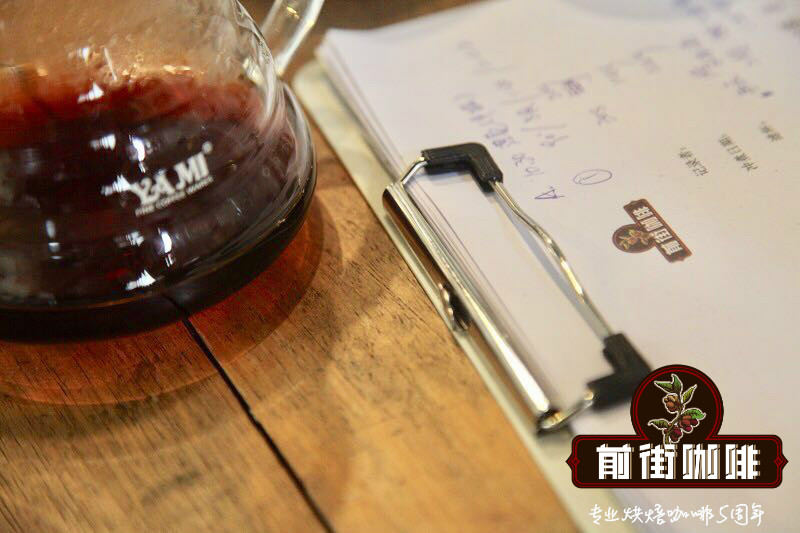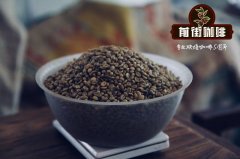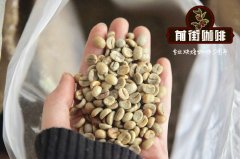Kenya Thika producing area | what is the flavor of the K8 variety washed in Muiri/Kihoto Farm?

Professional coffee knowledge exchange more coffee bean information please follow the coffee workshop (Wechat official account cafe_style)
Kenya Thika producing area | what is the flavor of the K8 variety washed in Muiri/Kihoto Farm?
Kenya is a model country for the production of fine coffee beans. Coffee was introduced from Britain in 1900. Only traditional Arabica did not have the best bourbon species of SL28 and SL34 in Kenya until 1950. All water was collected and treated, with a few sun-dried beans. Graded adoption of AA PLUS ·AA ·AB system, but this is only the difference in particle size uniformity does not represent the difference in quality, not to mention Kenya AA is a brand, which is blind, this indicates that you have to evaluate the high quality at an altitude of 4200 to 6800 feet above sea level, the price can rise only when the yield is low, it can be harvested twice a year, 4-June is the second production season, and 10-December is the harvest season of the main harvest season.
Murir Farm, formerly known as Kihoto Farm, was changed to Murir Farm after 1976, meaning budding in Kikuyu. It is a large farm that reproduces varieties and takes care of 1000 families. The farm has been certified organic since 2008.
The history of coffee cultivation in Kenya can be traced back to the end of the 19th century. Coffee trees were introduced from neighboring Ethiopia in the north and improved by their own varieties. At present, the common varieties are Bourbon, Kents,SL34, SL28, Typica and Riuri 11. Now about 90% of the coffee varieties are SL34 and SL28. The new variety Batian published in 2007 has not been planted in large quantities. The vast majority of Kenyan coffee is grown organically without certification because of the use of improved planting techniques and the rare use of chemical pesticides or herbicides. All Kenyan premium coffee is washed, and low-grade products made from sun-dried beans (non-washed buni) are only available for local use.
More than 6 million people in China are engaged in the coffee industry, mostly in the form of a combination of small farmers and cooperatives. Coffee trees in Kenya are mostly planted at 1400 m-2000 m above sea level, and the growth areas include Ruiri, Thika, Kirinyaga and Mt. Kenya West, Nyeri, Kiambu and Muranga. Mainly in the foothills of Mt.Kenya and Aberdare. There are many producing areas in Kenya that strive to preserve the native forest ecosystem, protect the natural gene pool, support the reproduction of wild coffee varieties and breed a variety of coffee trees. In 1930, the unique Kenyan varieties SL28 and SL34, which were cultivated and named by the "Scott Laboratories" laboratory, were born under such a good environment. According to botanists in SL laboratory, SL28 and SL34 are genetic variants. Among them, SL28 has a mixed pedigree of French missionaries, mocha and Yemeni Tibica. The goal of cultivating SL28 was to mass produce coffee beans with high quality and resistance to diseases and insect pests. Although SL28 did not produce as much as expected, copper and broad bean-shaped beans have great sweetness, balance and complex flavor, as well as significant citrus and black plum characteristics. SL34 is similar to SL28 in flavor, with a heavier, fuller and cleaner finish than SL28, except for the complex acidity and great sweetness of the finish. SL34 has French missionaries, bourbon, and more Tibica ancestry. Dou looks similar to SL28, but is more adaptable to sudden heavy rain. It is these two important varieties that lead us to the unique Kenyan style: strong acidity, rich taste and beautiful balance.
Property Characteristics: farm characteristics
Farm Farm: Muiri Xinya Farm
Grade level: AA
Country country: Kenya Kenya
Region: Thika in Central Dashan area
Altitude altitude: 1350 m
Soil soil: Red Volcanic Loam soils volcanic clay
Coffee Characteristics: coffee characteristics
Flowering period flowering period: March-June March to June
Harvest period harvest time: December-February harvest once a year from December to February
Variety variety: SL28 SL 34K8
Processing System treatment: washed beans
Qianjie recommended cooking:
Filter cup: Hario V60
Water temperature: 90 degrees
Degree of grinding: small Fuji 3.5
Cooking methods: the ratio of water to powder is 1:15, 15g powder, the first injection of 25g water, 25 s steaming, the second injection to 120g water cut off, waiting for the powder bed water to half and then water injection, slow water injection until 225g water, extraction time about 2:00
Analysis: using three-stage brewing to clarify the flavor of the front, middle and back of the coffee. Because V60 has many ribs and the drainage speed is fast, it can prolong the extraction time when the water is cut off.
Important Notice :
前街咖啡 FrontStreet Coffee has moved to new addredd:
FrontStreet Coffee Address: 315,Donghua East Road,GuangZhou
Tel:020 38364473
- Prev

Nyeri region of Kenya | Hiriga treatment plant washing AB beans SL 28 SL 34 v60 hand flushing flavor
Professional coffee knowledge exchange more coffee bean information please follow the coffee workshop (Wechat official account cafe_style) Nyeri area of Kenya | Hiriga processing plant washed AB beans SL 28 SL 34 v60 hand flavor? Kenya is a country that produces fine coffee. Only the traditional Arabica was introduced from Britain in 1900. It was not until 1950 that Kenya had the best SL2.
- Next

46-year-old Sammi Cheng likes drinking black coffee, thin and healthy! How is the star A4 waist made?
Professional coffee knowledge exchange more coffee bean information Please follow the coffee workshop (Wechat official account cafe_style) recently, Sammi Cheng posted Weibo, after exercise, made an appointment with friends to visit her, and then stopped by for a walk to the beach, perhaps because of the No. 3 typhoon, the people were surprisingly rare. Sit down and have a cup of black coffee. I like the bitter taste. Zheng Sammi, 46, is thin and healthy
Related
- Detailed explanation of Jadeite planting Land in Panamanian Jadeite Manor introduction to the grading system of Jadeite competitive bidding, Red bid, Green bid and Rose Summer
- Story of Coffee planting in Brenka region of Costa Rica Stonehenge Manor anaerobic heavy honey treatment of flavor mouth
- What's on the barrel of Blue Mountain Coffee beans?
- Can American coffee also pull flowers? How to use hot American style to pull out a good-looking pattern?
- Can you make a cold extract with coffee beans? What is the right proportion for cold-extracted coffee formula?
- Indonesian PWN Gold Mandrine Coffee Origin Features Flavor How to Chong? Mandolin coffee is American.
- A brief introduction to the flavor characteristics of Brazilian yellow bourbon coffee beans
- What is the effect of different water quality on the flavor of cold-extracted coffee? What kind of water is best for brewing coffee?
- Why do you think of Rose Summer whenever you mention Panamanian coffee?
- Introduction to the characteristics of authentic blue mountain coffee bean producing areas? What is the CIB Coffee Authority in Jamaica?

